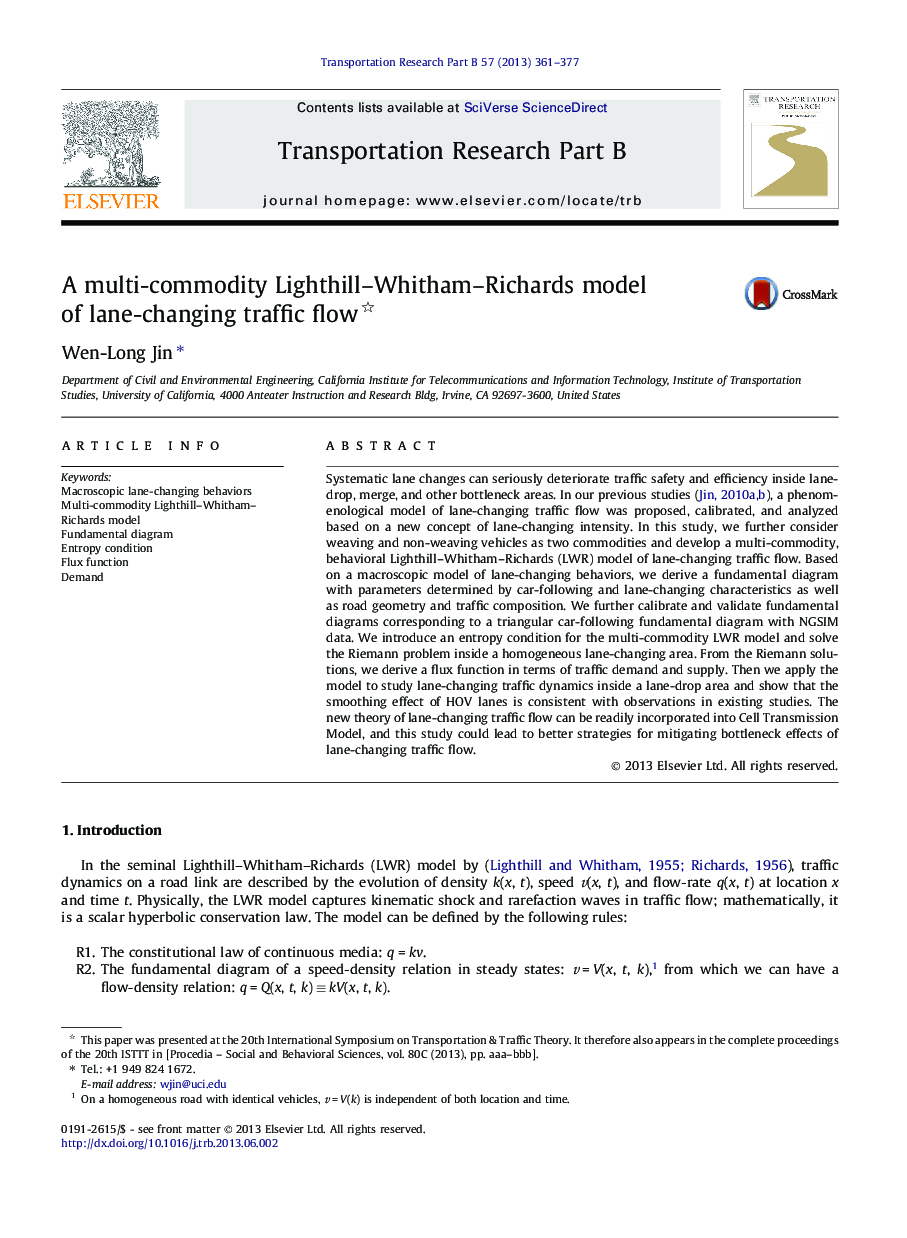| Article ID | Journal | Published Year | Pages | File Type |
|---|---|---|---|---|
| 1131970 | Transportation Research Part B: Methodological | 2013 | 17 Pages |
•Aggregate lane-changing behaviors are captured by a macroscopic model of the number of lane changes.•A fundamental diagram of lane-changing traffic is derived and calibrated and validated with NGSIM data.•The multi-commodity LWR model of lane-changing traffic flow is solved with a new entropy condition.•Lane-changing traffic dynamics are studied inside a lane-drop area.•The smoothing effect of HOV lanes is shown to be consistent with observations in existing studies.
Systematic lane changes can seriously deteriorate traffic safety and efficiency inside lane-drop, merge, and other bottleneck areas. In our previous studies (Jin, 2010a and Jin, 2010b), a phenomenological model of lane-changing traffic flow was proposed, calibrated, and analyzed based on a new concept of lane-changing intensity. In this study, we further consider weaving and non-weaving vehicles as two commodities and develop a multi-commodity, behavioral Lighthill–Whitham–Richards (LWR) model of lane-changing traffic flow. Based on a macroscopic model of lane-changing behaviors, we derive a fundamental diagram with parameters determined by car-following and lane-changing characteristics as well as road geometry and traffic composition. We further calibrate and validate fundamental diagrams corresponding to a triangular car-following fundamental diagram with NGSIM data. We introduce an entropy condition for the multi-commodity LWR model and solve the Riemann problem inside a homogeneous lane-changing area. From the Riemann solutions, we derive a flux function in terms of traffic demand and supply. Then we apply the model to study lane-changing traffic dynamics inside a lane-drop area and show that the smoothing effect of HOV lanes is consistent with observations in existing studies. The new theory of lane-changing traffic flow can be readily incorporated into Cell Transmission Model, and this study could lead to better strategies for mitigating bottleneck effects of lane-changing traffic flow.
